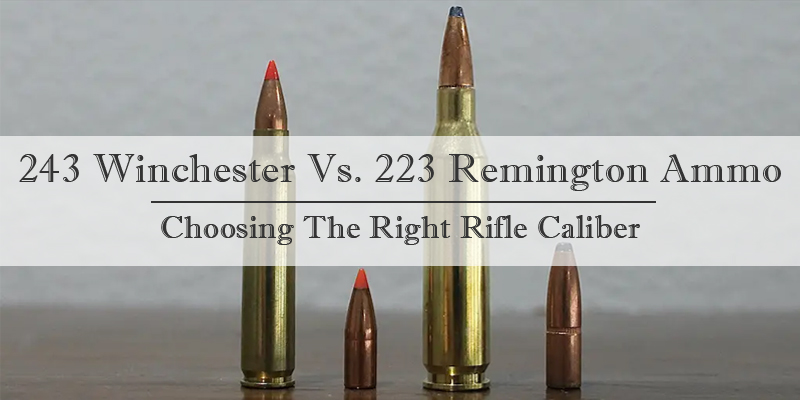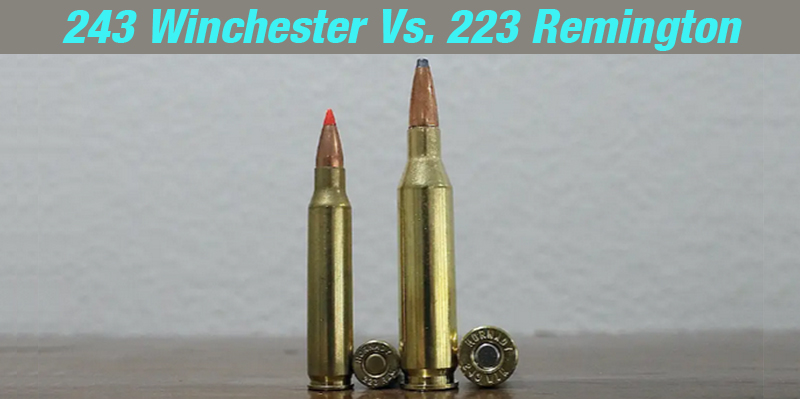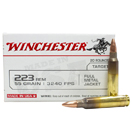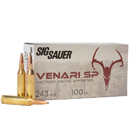243 Winchester Vs. 223 Remington Ammo Comparison - Choosing The Right Rifle Caliber.
Stuck in choosing between the 243 Winchester and 223 Remington cartridges?
Both cartridges pack a punch and boast a loyal following, but knowing which one to sling over your shoulder requires some straight-shooting intel.
My name is Lisa, Bulk Cheap Ammo's Content Editor. I will uncover many interesting details of the 243 vs 223 debate, shedding light on essential aspects by exploring their characteristics, strengths, and best applications.
Before this blog post, I also wrote down a comparison between 556 ammo Vs. 223 ammo.
Let's continue to open this debate. Both cartridges are centerfire champions, but they wear different hats under the hunting sun.
Many hunters acknowledge that both the 243 Winchester and 223 Remington are outstanding cartridges, each excelling in specific situations. Despite some overlapping capabilities, significant differences exist between the 243 and 223 cartridges that are crucial to understanding.

I aim to provide valuable insights to assist you in making a well-informed decision. Whether you are a hunter or shooter, understanding which cartridge aligns with your individual needs is key to choosing the one that will work best for you.
Let's start with their Origin
The story begins in a post-WWII world, where technology was surging, and firearms were evolving. one for a military powerhouse and another for a hunter's precision tool. The .223 Remington was Developed by Remington Arms in 1964, and the 243 ammo was Introduced by Winchester in 1955.
243 Winchester Vs. 223 Remington Ammo: Specifications
The .243 Winchester fires a larger bullet than the .223 Remington, which gives it more weight and energy at longer distances. This makes the .243 a better choice for hunting medium-sized game like deer and antelope.
| Feature | .243 Winchester | .223 Remington |
| Parent Case | .308 Winchester | None |
| Case Type | Bottlenecked | Rimless, Bottlenecked |
| Bullet Diameter | .243 in (6.2 mm) | .224 in (5.7 mm) |
| Land Diameter | .237 in (6.0 mm) | .222 in (5.6 mm) |
| Neck Diameter | .276 in (7.0 mm) | .253 in (6.4 mm) |
| Shoulder Diameter | .454 in (11.5 mm) | .447 in (11.3 mm) |
| Base Diameter | .471 in (12.0 mm) | .376 in (9.6 mm) |
| Rim Diameter | .473 in (12.0 mm) | .378 in (9.6 mm) |
| Case Length | 2.045 in (51.9 mm) | 1.760 in (44.7 mm) |
| Overall Length | 2.7098 in (68.83 mm) | 2.260 in (57.4 mm) |
| Case Capacity | 53.7–54.8 gr | 30.2 gr |
| Maximum Pressure (C.I.P.) | 60,191 psi (415.00 MPa) | 62,366 psi (430.00 MPa) |
| Maximum Pressure (SAAMI) | 60,000 psi (410 MPa) | 55,000 psi (380 MPa) |

The .243 Winchester has a larger case capacity than the .223 Remington, which allows it to hold more powder and generate higher velocities. This also contributes to the .243's superior performance at longer ranges.
Bullet size is also an important difference between 223 and 243 ammo. The .243 Winchester has more recoil than the .223 Remington due to its larger bullet and higher powder charge. This can be a factor to consider for shooters who are sensitive to recoil.
243 Winchester Vs. 223 Remington Ammo: Average Cost
The cost of both calibers can vary depending on several factors, including the brand, quality, bullet type, and quantity purchased. On average, you can expect to find .223 ammo priced starting at $0.40 per round, While the starting price per round for .243 Winchester is more than twice that of .223 Remington.
The .223 Remington is more widely available and generally less expensive than the .243 Winchester. This is because the .223 is used in a popular platform like the AR-15, which has driven up demand for both the cartridge and related components.
243 Winchester Vs. 223 Remington Ammo: Ballistic Performance
.223 Remington:
- The .223 Rem is a popular and versatile cartridge known for its relatively low recoil.
- Typically fired with lighter .22-caliber bullets, it excels in terms of velocity and flat trajectory.
- Suitable for varmint hunting, sport shooting, and home defense.
- Limited kinetic energy compared to larger cartridges, making it less suitable for big game hunting.
.243 Winchester:
- The .243 Win is a well-rounded cartridge, offering versatility for varmint, deer, and tactical applications.
- With various bullet weights available, it provides a flat trajectory and good energy at longer ranges.
- Excellent for deer hunting with appropriate bullet selection.
- More recoil than the .223 but is manageable for a wide range of shooters.
243 Winchester Vs. 223 Remington Ammo: Use Cases
.223 Remington:
- Ideal for varmint hunting and pest control due to its flat trajectory and minimal recoil.
- Widely used in semi-automatic rifles, such as the AR-15 platform.
- Popular in competitive shooting disciplines due to its accuracy and low recoil.
- Limited suitability for big game hunting, especially larger animals.
.243 Winchester:
- A versatile cartridge is suitable for varmint hunting, deer hunting, and tactical applications.
- Offers better performance at longer ranges compared to the .223.
- Well-regarded for precision shooting and long-range accuracy.
- Effective for medium-sized games with proper bullet selection.
243 Winchester Vs. 223 Remington Ammo: Considerations for Reloaders
.223 Remington:
- Brass quality is crucial for consistent performance; reloaders should choose reputable suppliers.
- Relatively straightforward to reload, and components are widely available.
- Proper attention to case length and bullet seating depth is essential for accuracy.
.243 Winchester:
- Brass quality remains important; Lapua, Norma, and Winchester are good choices.
- Reloaders have a variety of bullet weights and types to choose from for different applications.
- Consideration for powder selection based on bullet weight and desired performance.
243 Winchester Vs. 223 Remington Ammo: Recoil and shoot ability
.223 Remington:
- Low recoil makes it accessible to a broad range of shooters, including beginners.
- Well-suited for those who prioritize minimal kick for extended shooting sessions.
.243 Winchester:
- Moderate recoil, manageable for most shooters.
- Offers more energy downrange but comes with a slightly higher recoil compared to the .223.
So, which one's for you?
Grab the .243 if:
- You're a varmint slayer or prefer lighter recoil.
- You hunt primarily whitetail deer at moderate distances.
- You enjoy long-range plinking without bruising your shoulder.
Saddle up with the .270 if:
- You crave knockdown power for larger games like elk and mule deer.
- You're a long-range marksman who embraces the thump of recoil.
- You envision yourself facing off against hefty critters out in the wild yonder.
Remember, there's no one-size-fits-all answer. Consider your preferred game, shooting style, and recoil tolerance before making your pick. Both cartridges are capable companions, so choose the one that speaks to your inner hunter and lets you face the season with confidence.
And remember, at the end of the day, the most important shot is the one you put between the sights, not the one you have in your rifle. So practice, sharpen your skills, and make every shot count, regardless of the caliber you choose.
Happy hunting, partner!



